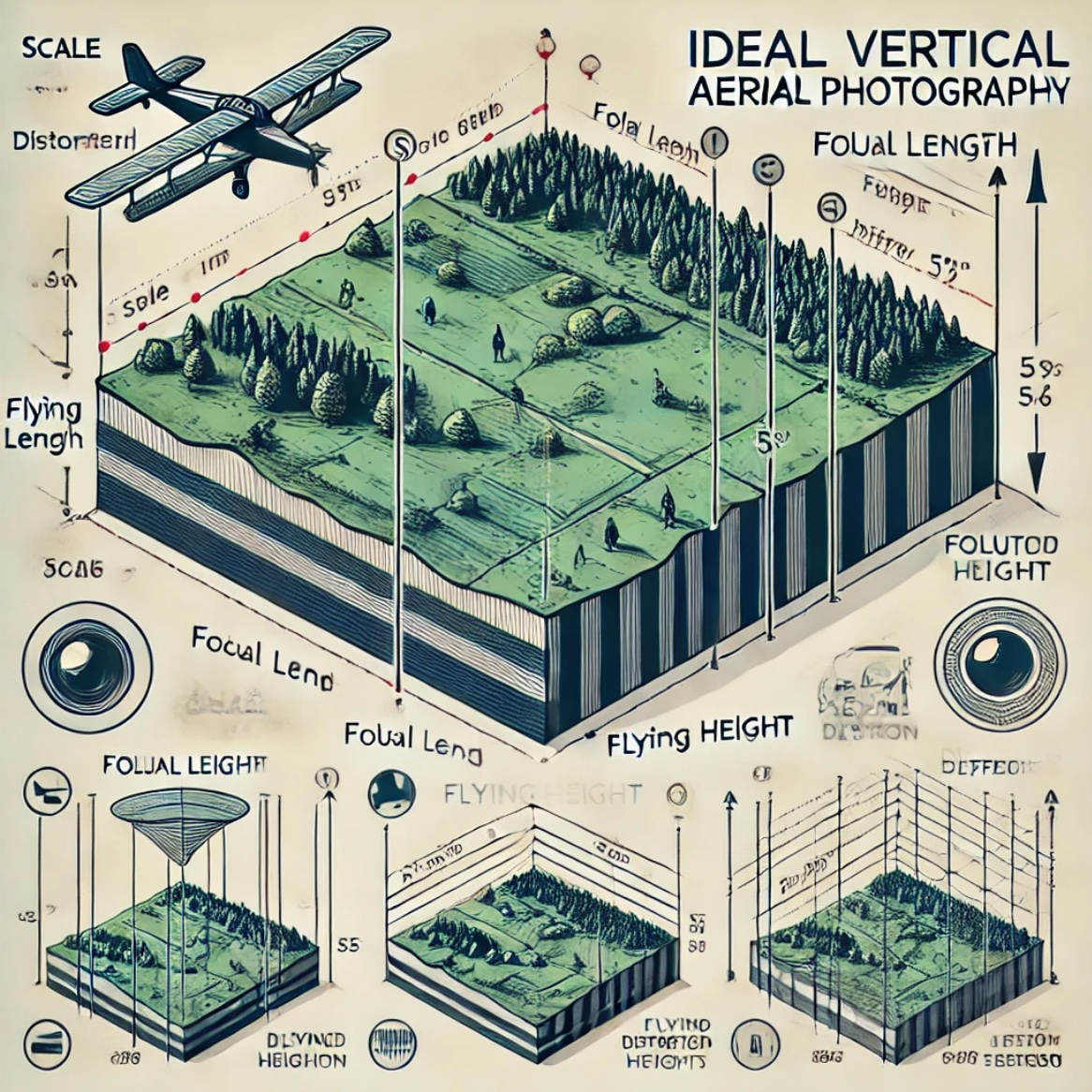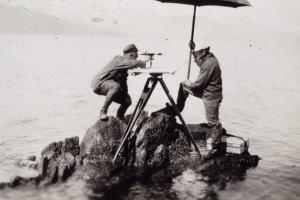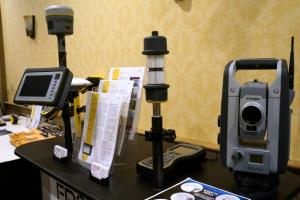Scale and Distortion of a Vertical Photograph

Scale of a Vertical Photograph:
The scale of a photograph is the ratio between the dist measured on the photograph and the ground distance between the same two points.
Difference between map and photograph:
MAP: Orthographic projection
- scale in uniform.
PHOTOGRAPH: Prospective view
- scale varies form point to point with variation in elevation.
The scale of the photograph is expressed as a representative fraction. (A scale having the importance that we can take it in any unit). Knowing the height of the airplanes above the datum and the focal length of the camera. The scale of the photograph can be dot. If the ground were level as shown in figure by the dotted line A’D the scale of the photograph would be.

From similar = S (scale) (1)
The drawing horizontal plane through A and B the scale at A and B will Be
![]() (2)
(2)
![]() (3)
(3)
The scale of line ab, assuming an elevation AB equal![]() and then.
and then.
The scale will become equal to  (4)
(4)
This is now the scale which is app to both the pts A and B.
From eq. 2 and 3 it is apparent that photo scale increases at higher elves and dec at lower elev. This concept is seen graphically in figure (2). Ground lengths AB and CD are equal but photo distances ab and cd are not, cd being longer and at larger scale then ab due to the higher elves of CD. Average photo scale is obtained by determining ground elevation of the area photograph. If N is the number of points considered with ground heights h1,h2------- hn then average photo scale is given by
Scale for the whole photograph ![]()
Where Havg = ![]()
As the scale of the photograph depends on the height ‘H’ of the camera above ground, any variation in ‘H’ will change the scale. It is therefore essential that the aeroplane flies at the constant variation.
Use of an average photo scale is frequently desirable but must be accepted with caution as an approximation. Scale of a photograph can be determined if a map is available of the same area. This method doesn’t require the focal length and flying height to be known, it is necessary only to measure on a photograph a dist b.t two well defined pts identifiable on map. The photo scale is then calculated using the following relationship.
![]()
PHOTO SCALE = ![]()
Scale at average elevation of the two points considered.
NOTE: The numerator and denominator must be expressed in the same units.
Distortion due to height (or Relief) on the vertical Photograph:
Consider the sight of a high building BC in the figure and it consequent image bc on the negative. B is vertically above C and in plane the two coincides but on photograph the sight of the building cb would by observed as well as the roof of this building would appear to be leaning outwards from the centre of the photograph.
Relief distortion on a vertical photograph occurs along radial line form the principal point an increases in magnitude with greater distance to the image. From similar triangles EBO and obv
![]() (1)
(1)
Similarly, from vco and VCD
![]() (2)
(2)
Dividing eq 1 by 2

Thus distortion due to height Bc
![]() (A)
(A)
 (b)
(b)
The expressions A and B hold good for a truly vertical photograph.




